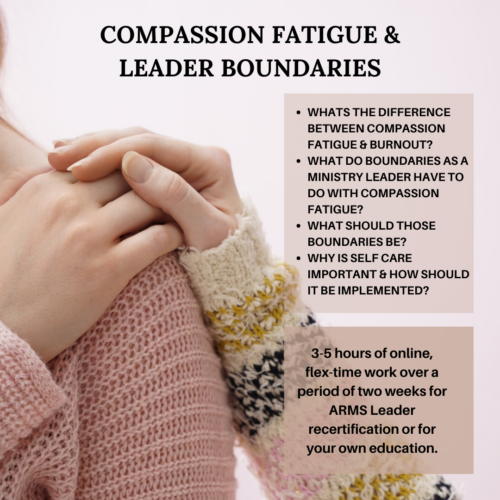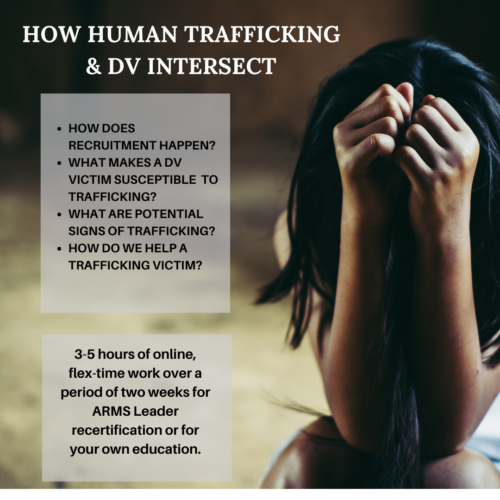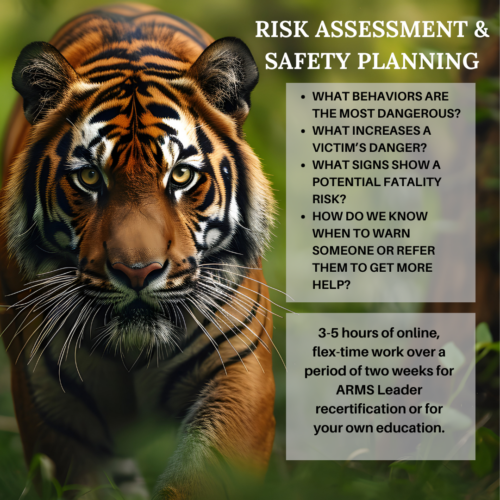LOOKING TO PAY BY CREDIT OR DEBIT CARD? PLEASE SCROLL TO BOTTOM OF DESCRIPTION AND CHOOSE "ADD TO CART".
Receive your certificate for faith-based domestic violence advocacy and Her Journey leadership certification with the completion of this course.
I can't even begin to explain how God works through this program and the women who have moved through it. It has had the most incredible and positive effect on my life. I have had several women move through the program and complete it, but they continue to join us for in person meetings. I love that they feel welcome, and the comradery is miraculous. They connect with each other and with myself because for years in the abuse, they feel estranged from everyone, even doubting their own sanity. It is like a breath of fresh air to finally be in a room of others that understand what you have been through. -Karmen
I learned a lot about my abuser and his mindset. It took a lot of the blame and guilt off of me, in that I was not in control and could not have made a diffference in his behavior. Also, being a pretty new Christian, I learned that God does not want us to stay in bad abusive situations because we made a promise. God wants us to have a safe and healthy life. The key words being: I didn't cause this, I couldn't not have fixed him, and God did not put me there to punish me. -Cyndi
DVALT (Domestic Violence Advocacy & Leadership Training) is for people who want to facilitate a Her Journey, ManKind or Virtue group. This course provides essential knowledge on recognizing abuse, understanding its effects, and learning how to support those impacted. Participants will gain insight into the abuser’s mentality, the different forms of abuse, the cycle of domestic violence, and the impact on children. The training also covers trauma’s effect on the brain, the importance of boundaries, and why couples counseling in abusive situations can be dangerous. You'll also be equipped to facilitate Her Journey women's recovery groups with wisdom, compassion and practical guidance on topics like safety planning, setting healthy boundaries and regaining one's sense of self after experiencing abuse. Part 1 occurs on Zoom for 8 weeks as we go through 15 Her Journey lessons. This is the victim advocacy part of the training. It occurs on Wednesday mornings (9-11am, Pacific) for 8 weeks. Part one also includes online quizzes for each week and valuable time with current facilitators. Part 2 occurs on an online platform and lasts 5 weeks. This portion is flexible time, as long as you complete your work within the week it is due. ABOUT THE DVALT ONLINE TRAINING MODULES 5 Weeks-Online Modules Required Reading: “Why Does He Do That?” by Lundy Bancroft Module 1: The Effects of Abuse on Women and Children Study how many isolated issues are not recognized as effects of the trauma of the abuse women and children are facing. You will understand how domestic violence impacts mental health for both children and adults, even when they are only witnesses of abuse or controlling behavior. Module 2: Understanding the Mentality of an Abuser Discover the top warning signs of an abuser and learn what to ask your group members to help determine if change in their abuser is possible. You will review the tactics that abusers commonly used and discover how power and control can be misused. Module 3: Risk Assessments & Safety Planning Learn about a Danger Assessment and when it is appropriate. Learn how to ask questions in a group setting to determine risk to a group member. Understand how ARMS uses safety planning and what is recommended for a safe exit from an abusive situation. Module 4: Trauma’s Impact on the Brain Understand how our brains physically change with abuse and trauma and how to work with group members who are struggling. Learn some common “triggered responses” and the best way to deal with each one. Study The Drama Triangle and learn what role you most naturally move into as well as how to change your natural inclinations to healthy and helpful responses within your group. Module 5: Group Dynamics and Leadership Boundaries Video segments of do’s and don’ts within a group will be shown to help you best understand how to work with this those who have experienced abuse. Study how to be the most helpful versus using enabling or rescuing techniques. We also cover ARMS-approved guidelines for running groups, provide a final quiz and request a course survey from participants.




